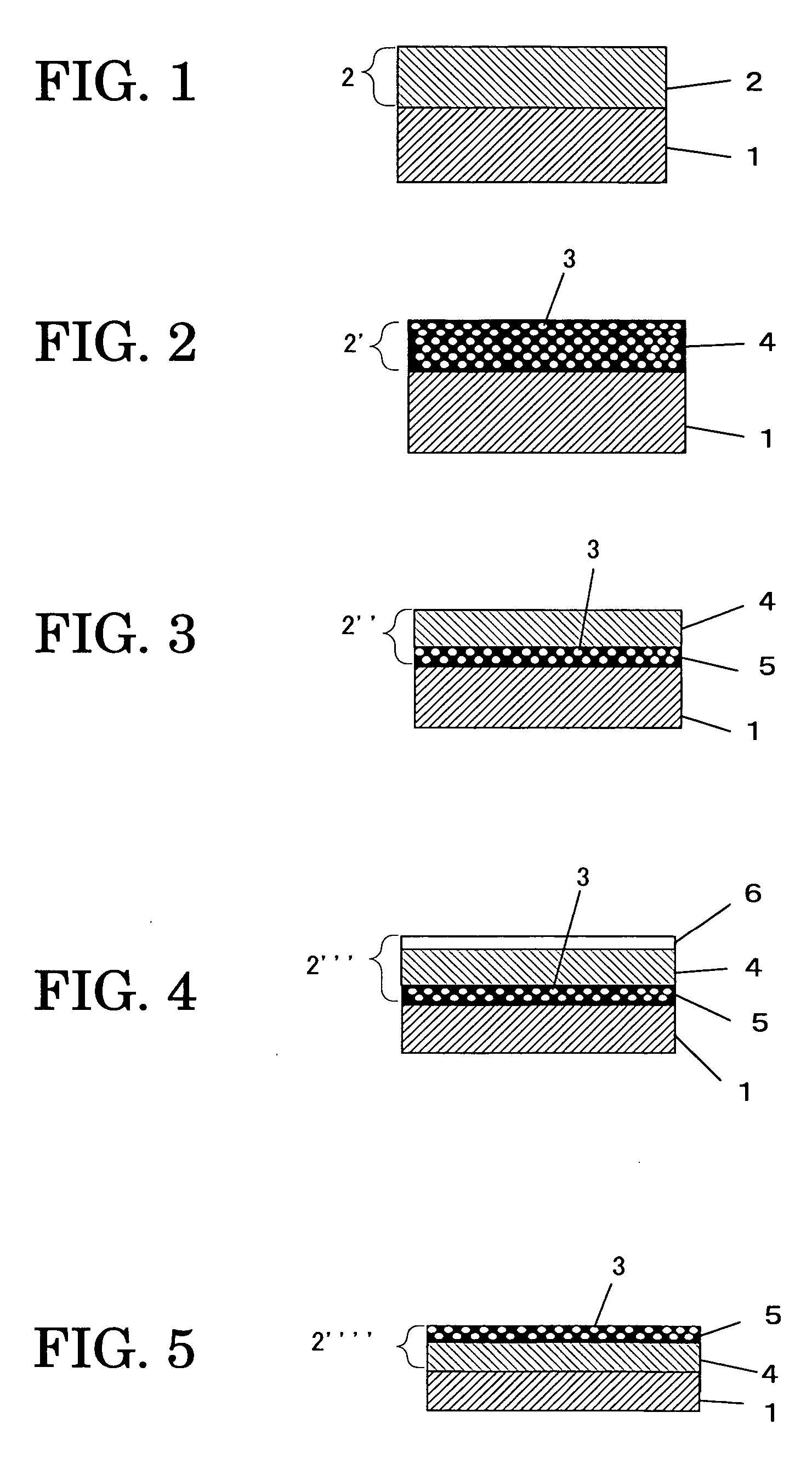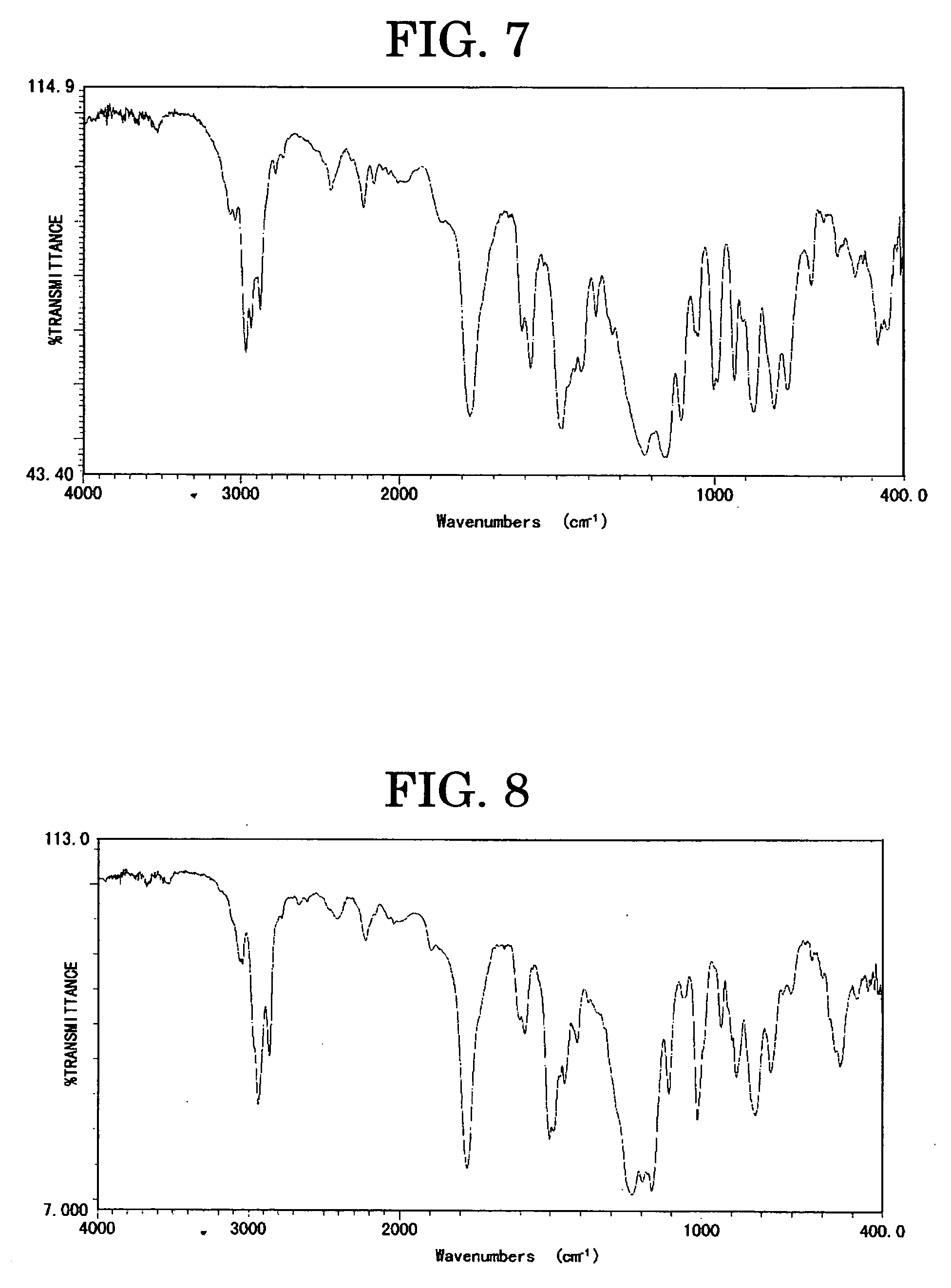Aromatic polycarbonate resin, electrophotographic photoconductor, dihydroxy diphenyl ether compound, and process of manufacturing dihydroxy diphenyl ether compound
a technology of diphenyl ether and diphenyl ether, which is applied in the field of electrophotographic photoconductor, diphenyl ether compound, and process of manufacturing diphenyl ether compound, can solve the problems of low intrinsic mechanical strength of the binder resin, failure of the photoconductor, scratches, cracks, etc., and achieves the effect of effective photoconductive material, increased optical sensitivity and chemical sensitivity, and high sensitivity
- Summary
- Abstract
- Description
- Claims
- Application Information
AI Technical Summary
Benefits of technology
Problems solved by technology
Method used
Image
Examples
synthesis example i-1
Manufacture of 4,4′-diacetoxy diphenyl ether (a Compound Expressed by A1=CH3, A2=A3=A4=A5=A6=A7=H in the General Formula (XVIII))
[0222] At a room temperature and in a stirring state, one droplet of 95% of sulfuric acid is added into 80.88 g (0.4 mol) of 4,4′-diphenyl ether and 102.09 g (1 mol) of acetic anhydride, to be stirred at the room temperature for 2 hours. The thus obtained reactant is added on an ice / water. A crystal deposit is filtered, washed with water, dried, and then refined using ethanol for recrystallization, to thereby obtain 109.24 g (95.4%) of an object.
[0223] Melting point: 112.5° C. to 113.5° C.
[0224] Element analysis value (%): Measured value / calculated value C, 66.98 / 67.13; H, 4.98 / 4.93.
synthesis example i-2
Manufacture of 4,4′-dihydroxy-3,3′-diethylene diphenyl ether (a Compound Expressed by A1=CH3, A2=A3=A4=A5=A6=A7=H in the General Formula (XIX))
[0225] 48 g (0.36 mol) of aluminum chloride (anhydrous) is added at once into a 150 ml solution of 1,1,2,2-tetrachloroethane of 28.63 g (0.1 mol) of the 4,4′-diacetoxy diphenyl ether obtained by the synthesis example I-1. Then, the reactant mixture is heated and stirred at 120° C. for 1 hour. Then, the reactant mixture is left at rest for cooling, and added on an ice / water. A hydrochloric acid is added to the reactant mixture. Extraction was carried out with dichloromethane. The dichloromethane phase was washed with water, and was dried with anhydrous magnesium sulfate. Then, the solvent was distilled. Then, the residue was refined using n-butanol for recrystallization, to thereby obtain 22.45 g (78.4%) of an object.
[0226] Melting point: 185.0° C. to 185.5° C.
[0227] Element analysis value (%): Measured value / calculated value C, 67.02 / 67.13...
synthesis example i-3
Manufacture of 4,4′-dihydroxy-3,3′-diethyl diphenyl ether (a Compound Expressed by A1=CH3, A2=A3=A4=A5=A6=A7=H in the General Formula (XI))
[0228] At a room temperature and in a stirring state, 29.07 g (0.25 mol) of triethyl silane is dropped for 1 hour into a 171 g solution of trifluoro acetic acid of 14.31 g (0.05 mol) of the 4,4′-dihydroxy -3,3′-diethylene diphenyl ether obtained by the synthesis example I-2. Then, the mixture is reacted for 4 hours under the same condition. Then, the reactant mixture is left at rest for cooling, and added on an ice / water. Extraction was carried out with dichloromethane. The dichloromethane phase was washed with water, and was dried with anhydrous magnesium sulfate. Then, the solvent was distilled. Then, the residue was subjected to a silica gel column chromatography using a mixture solvent of toluene / ethyl acetate (9 / 1), and then was refined using toluene for recrystallization, to thereby obtain 10.95 g (84.8%) of 4,4′-dihydroxy-3,3′-diethyl dip...
PUM
| Property | Measurement | Unit |
|---|---|---|
| temperature | aaaaa | aaaaa |
| pressure | aaaaa | aaaaa |
| reaction time | aaaaa | aaaaa |
Abstract
Description
Claims
Application Information
 Login to View More
Login to View More - R&D
- Intellectual Property
- Life Sciences
- Materials
- Tech Scout
- Unparalleled Data Quality
- Higher Quality Content
- 60% Fewer Hallucinations
Browse by: Latest US Patents, China's latest patents, Technical Efficacy Thesaurus, Application Domain, Technology Topic, Popular Technical Reports.
© 2025 PatSnap. All rights reserved.Legal|Privacy policy|Modern Slavery Act Transparency Statement|Sitemap|About US| Contact US: help@patsnap.com



